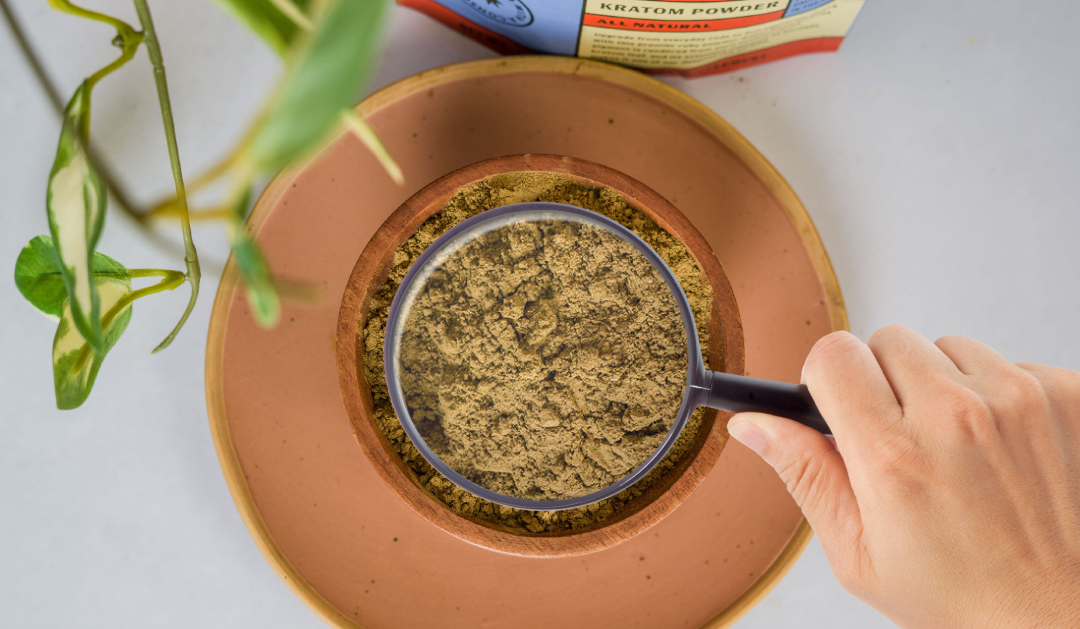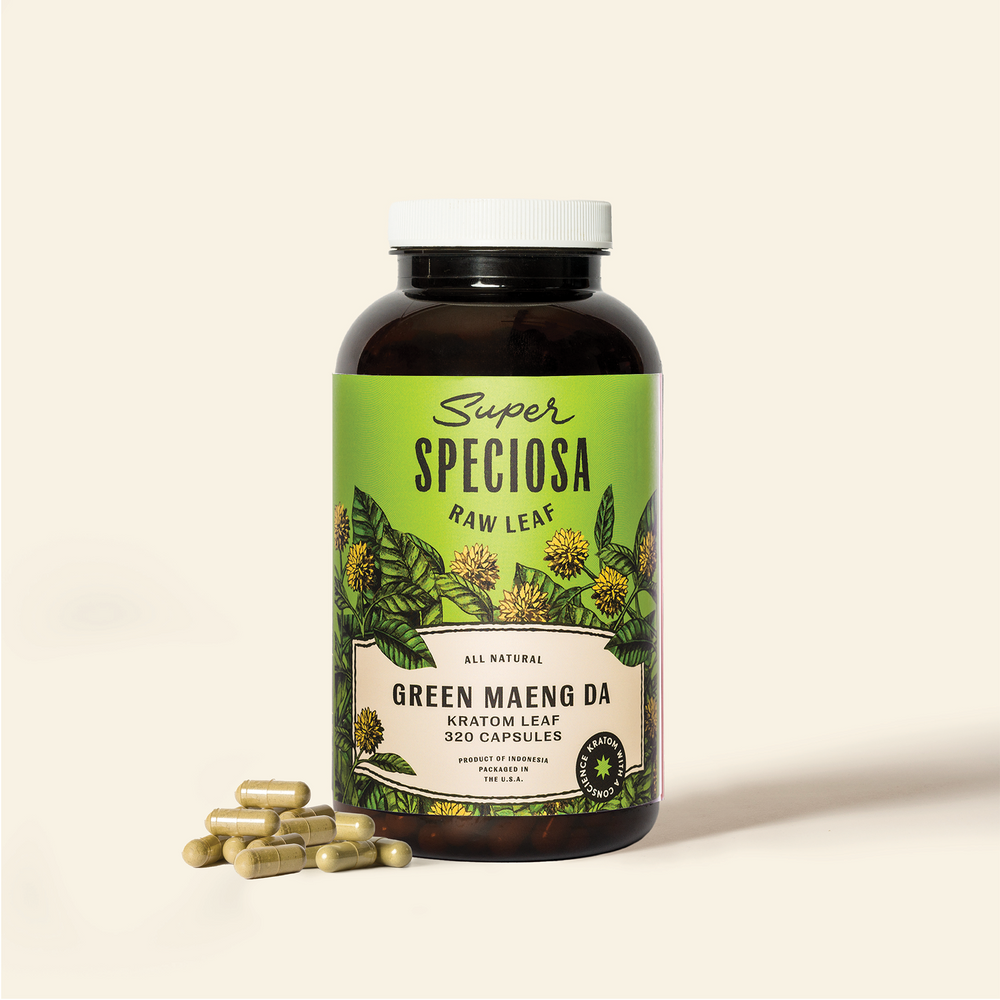“Do It The Right Way”: How Super Speciosa Became Part of Groundbreaking FDA Study
“DO IT THE RIGHT WAY”: HOW SUPER SPECIOSA BECAME PART OF GROUNDBREAKING FDA STUDY

Kratom advocates have been doing a decades-long dance with the Food and Drug Administration (FDA) over the legality, research and safety of the supplement.
Two unsuccessful attempts to schedule kratom have cooled the FDA’s desire to try and take action against the plant; those same sentiments are also why the FDA took its time in planning hands-on research.
Following years of warnings and hesitancy, the FDA finally worked with a contract research organization (CRO) and academic researchers to conduct their very first study on the adverse effects of kratom. What came as even more of a surprise, was they used Super Speciosa’s kratom to conduct their very first FDA kratom study.
Super Speciosa’s Involvement
In February this year, the University of Florida hosted the third International Kratom Symposium in Orlando, which the Super Speciosa team attended to support kratom research. Kratom researchers from around the globe, including scientists from the FDA, gathered to present their findings.
At that conference, the FDA presented the results of their first kratom study. Dr. Christopher McCurdy, the Director of The Translational Drug Development Core at the University of Florida, led the meeting. Dr. Chad Reissig, a pharmacologist in the Center for Drug Evaluation and Research at the US FDA led the presentation of the dose-finding study.
Ken Loricchio, one of the founders of Super Speciosa, was on the phone in the hallway when the presentation started. As Loricchio was pulled into the auditorium by Joey Levin, the quality manager at Super Speciosa, he felt a brief moment of panic. He soon realized that the company was about to be at the center of an important industry event.
But when it came down to faith in his product? The anxiety quickly faded.
“I know that a lot of business owners get scared off because they think they are submitting themselves to something that’s going to get them in trouble. I don’t think Super Speciosa feels that way,” Loricchio said. “Everything we do we strive to do it the right way–we’re not scared to take on the additional work required to do things properly.”
That commitment to quality showed up in the results. Using the kratom provided by Super Speciosa, researchers gave subjects varying amounts of servings–up to five times the recommended amount. Even at those increased amounts, the only adverse effect was that two participants reported nausea. There were zero Serious Adverse Effects (SAE) found.
This early data confirms what advocates have been saying since those first attempts to ban the plant: Natural Kratom leaf produces only mild side effects. Now that a baseline of safety of a single dose has been established, the FDA can take its next steps toward discovering the plant’s true potential.
When the team at Super Speciosa was approached about providing raw materials for a study, they didn’t realize at the moment that they would be facilitating the FDA’s first steps into kratom research. Those raw materials went to researchers at the University of Florida, who would further examine the kratom provided through additional rigorous testing and then provide the CRO (Altasciences) with the kratom to conduct a dose-finding study.
Super Speciosa’s involvement in the study came from a professional relationship between Levin and McCurdy. Levin introduced McCurdy to Super Speciosa’s products through a kratom vendor’s association. Since then, Super Speciosa partnered with the University of Florida for multiple kratom studies.
In past presentations, McCurdy had talked about the difficulties of finding pure kratom leaves to study kratom’s alkaloids on their own. The lack of quality control in Indonesia made it difficult for vendors to source quality products, and bad actors took the next step of adding adulterants or altering the potency.
McCurdy trusted Super Speciosa because of its commitment to quality control, transparency, and rigorous third-party testing. When he needed a product to help the FDA take the next step, he believed Super Speciosa’s products were more than qualified for the job.
“I don't know that we're anywhere near where we're at right now without the guys at the University of Florida,” Levin said. “I mean, I think they're the beacon that the industry looks at if you want to understand what's going on with kratom and safety and science.”
Validating a Decade of Work
Beyond the future ripple effects of the FDA’s first foray into kratom research, the founders of Super Speciosa both said that seeing the brand attached to the study was a moment of success.
“To know that it passed those hurdles is just like an incredible achievement,” said Aaron Circhansky, co-founder of Super Speciosa. “I think it just goes to show that our processes and everything that we put in place… it was all worth it, and it's all working.”
The hurdles that Circhansky is referring to is a level of scrutiny that few in the kratom industry have ever faced. Using equipment far beyond the scope of most labs, the research team behind the study picked apart the kratom products. If there were any issues with adulterants or the handling of the raw material it would show up.
“Had it gone bad, who knows what that would have meant for the industry, because it's the first time the FDA has actually ever done it,” Levin said. “If our powder did fail any of the testing, or if there were serious adverse events during the trial, maybe that's their ammo, and they get kratom shut down.”
Levin called it a “huge deal” that Super Speciosa’s kratom passed the scrutiny. This helps kratom stay in the spotlight and emphasizes the importance of science and data.
After playing a part in the FDA’s first attempt to gauge the safety and efficacy of kratom, Loricchio said it makes all of those struggles worth it.
“I think that's kind of one thing that stands out to me is just it kind of validates a lot of what we've been doing over the last nine years,” he said.
Has the path been easy? Circhansky would be the first one to attest to the challenges that have faced kratom producers. As kratom’s popularity grew, issues like salmonella and other contaminants originally drew the ire of the FDA. Other bad actors toed the line of additives and synthetically modifying the effects of kratom.
Super Speciosa stayed the course, kept the product as natural and pure as possible and focused on delivering a quality product to its customers. That dedication is now changing the conversation around kratom from problems and pessimism to focus on the potential of the plant.
“I still think about it, like, I'm driving on the way to work, and it'll come across my mind, and I'll be by myself in my car with a smile on my face,” Circhansky said.
A Coalition That Cares
When it comes to protecting the legal status of kratom at both the federal and state levels, Loricchio admitted that it’s been tough to stay committed to an industry that has faced such intense backlash from regulators.
“I think of it as a David vs. Goliath attitude–if we don’t try and work together and figure this out, we’re not going to exist.”
That power imbalance hasn’t stopped kratom advocates from making their voices heard. Even in instances where the proposed ban or limitation on kratom sales was a foregone conclusion, there are always voices testing in support of the supplement. Most of the time, those voices are concerned consumers who understand and know the benefits of this plant and fear becoming criminals with the swipe of a pen.
“The people that go out there that are advocates for kratom in front of city councils and state legislatures…they're like, the grassroots army right there,” Circhansky said. “It takes a lot. You have to be really brave and passionate to go out there and do that.”
A majority of these hearings on kratom play out in startlingly similar fashion: Law enforcement quietly questions kratom’s safety and it’s echoed by any member of the legislature or city council with access to Google and the FDA’s warning and import alert. Another popular point of reference is the Mayo Clinic’s page on kratom–which lacks any direct data and points to a lack of studies and information on kratom as a cause of concern.
“It's tough when you have these medical professionals up there that maybe haven't given kratom a fair shot. It seems like in a lot of cases, they just read a couple of things that pop up on Google and that's what, they use to refute these arguments of the kratom advocates,” Circhansky said.
With the help of Super Speciosa, the FDA has now taken the first steps toward generating its own data. Circhansky noted that this is just the start of the research on kratom. He also emphasized that this is an important moment for those who have worked hard to advance kratom to this stage.
“It's just amazing to be able to support them,” Circhansky said, “and kind of give them this ammo to basically just provide the backup to help them make their point.”
The only publication that has reported the study's results so far is Bloomberg. They stated that the findings will be shared and peer-reviewed soon by the FDA. The study found that vomiting and nausea were the worst side effects at very high doses of kratom. They also discovered what Super Speciosa’s team has known for years: Quality matters.





